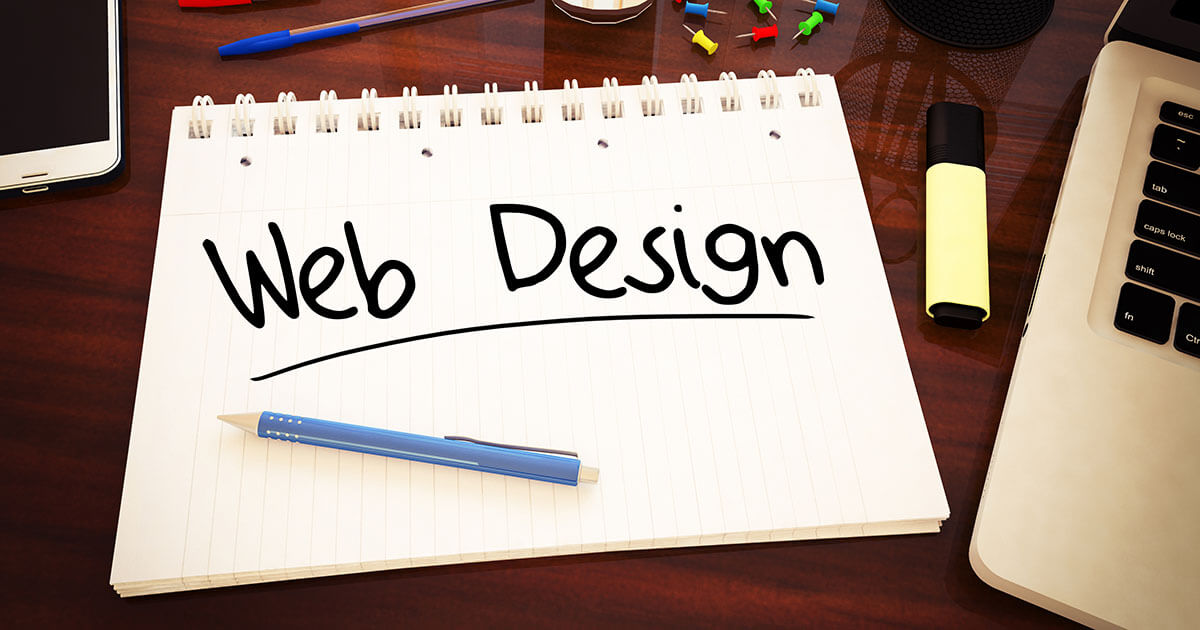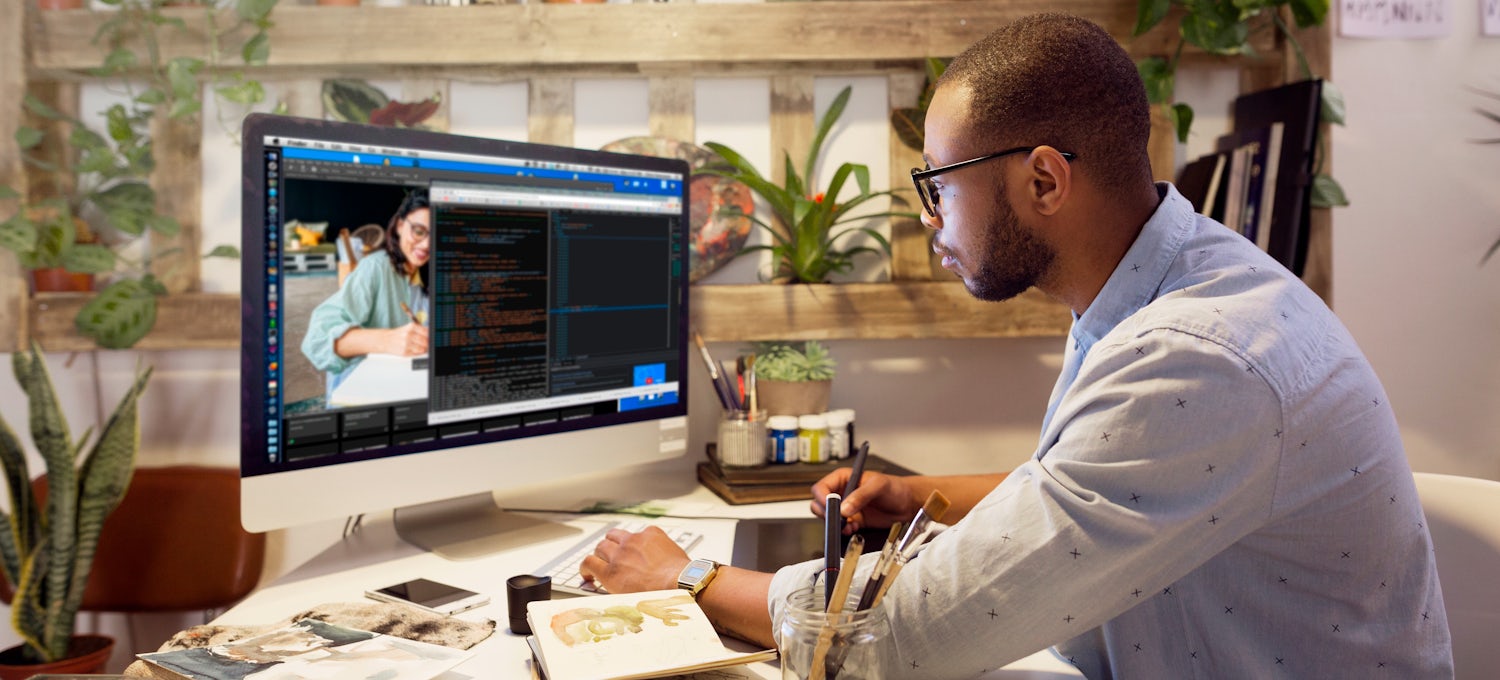Web Design London Ontario Plans for Every Price Range
Web Design London Ontario Plans for Every Price Range
Blog Article
How to Successfully Combine Aesthetic Appeals and Functionality in Web Design
When creating a website, you require to strike an equilibrium in between visual appeals and capability. It's not practically looking good; your layout needs to additionally serve an objective and overview customers efficiently. By focusing on simpleness and instinctive navigating, you can produce an appealing experience. Yet what components truly enhance functionality while keeping visual allure? Let's discover the crucial concepts that can result in an unified blend of elegance and function.
Understanding the Relevance of Aesthetic Appeals and Functionality
When you create an internet site, comprehending the equilibrium in between appearances and performance is crucial for producing a reliable individual experience. A visually enticing site grabs focus, however it's the capability that keeps users involved. If your site looks fantastic however is challenging to navigate, site visitors will promptly shed rate of interest and leave.Consider your target market and what attracts them in. You desire to produce a layout that reflects your brand while making certain simplicity of usage. Structured layouts, intuitive navigation, and clear telephone calls to activity can improve both looks and performance.

Concepts of Efficient Website Design
To create an effective website design, you need to follow several essential concepts that enhance both customer experience and aesthetic appeal. First, prioritize simplicity; a clean layout aids individuals navigate conveniently. Use a consistent shade plan and typography to preserve comprehensibility throughout your site. This cultivates knowledge and trust.Next, guarantee your style is responsive. Individuals access websites on various devices, so your style must adjust effortlessly. Pay interest to aesthetic power structure; emphasize essential aspects with positioning, shade, or dimension to guide individuals' focus.Finally, integrate sufficient white area. It prevents clutter and makes material more digestible. Bear in mind, efficient web design balances looks and capability, so every style option must offer a purpose. By following these principles, you'll develop a site that's not just visually enticing yet likewise straightforward, inevitably keeping site visitors engaged and urging them to return.
Focusing On User Experience
When focusing on user experience, you'll desire to begin by comprehending what your users really need. Simplifying navigating design can make a massive difference in how easily they discover what they're searching for. Enhancing visual hierarchy helps assist their focus to the most important components on your site.
Recognizing Customer Needs
Comprehending customer demands is vital for creating an interesting internet experience that keeps site visitors coming back. To attain this, you must determine the objectives and choices of your target market. Beginning by carrying out user research study, like surveys or meetings, to collect understandings on what users worth most. Take notice of their discomfort factors and obstacles when interacting with comparable sites. This information permits you to customize your layout, guaranteeing capability aligns with individual expectations. Additionally, think about producing user characters that stand for different sections of your target market, assisting you envision their demands during the design procedure. When you prioritize comprehending individual requirements, you create a site that not only looks wonderful but additionally delivers a smooth, delightful experience that promotes commitment.
Streamlining Navigation Style

Enhancing Aesthetic Pecking Order
A strong aesthetic hierarchy is essential in guiding customers via your web site and ensuring they involve with essential material. To attain this, utilize spacing, color, and dimension strategically. Make crucial components like headings bigger and bolder than body message, drawing attention promptly. Use contrasting colors to highlight telephone calls to action, urging clicks. Additionally, employ adequate white area to different areas, making content digestible and inviting.Consider the flow of information; set up elements realistically, leading customers' eyes from one factor to the following. Use visual signs, like lines or arrowheads, to route attention. By prioritizing aesthetic power structure, you boost user experience and boost the probability of conversions, ensuring your web site is both visually pleasing and functionally efficient.
Color Theory and Its Influence on Functionality
While choosing the best colors for your web site may feel like a minor detail, it greatly influences functionality and customer experience. Color influences just how customers regard information and can prevent or improve navigation. Contrasting shades can help important elements stand out, making it simpler for site visitors to discover what they need.Additionally, think about the psychology of shades: blue commonly influences trust, while red creates necessity. Knowing your target market can guide your shade choices, assuring they reverberate well.Moreover, constant color pattern help construct brand identity, making your internet site a lot more remarkable. Be mindful-- also several shades can bewilder customers. Adhere to a restricted combination that matches your material and keeps clarity.Incorporating availability is likewise necessary; confirm your shade mixes are friendly for those with aesthetic problems. By attentively using color theory, you'll enhance use and produce a much more engaging user experience.
Typography: Harmonizing Style and Readability
Shade options established the phase for your site, but typography plays an equally important role in improving individual experience. You desire your text to communicate plainly while likewise reflecting your brand name's individuality. Begin by picking font styles that are not only attractive but additionally readable. Sans-serif font styles usually function well for electronic screens, as they're less complicated to read at numerous sizes.Maintain a power structure by utilizing different typeface dimensions and weights; this guides users via your material easily. Take into consideration line spacing and letter spacing; too tight can annoy visitors, while as well loosened can disrupt the circulation. Limitation your font choices to two or three to maintain the style cohesive.Finally, always check your typography throughout various devices and browsers. What looks good on one display might not on another. Stabilizing design with readability guarantees that your message resonates, maintaining your audience informed and engaged.
Responsive Layout: Making Looks Deal With All Gadgets
To ensure your website looks great on check here any type of gadget, you'll need to welcome responsive style principles. This technique warranties your website adapts to various screen sizes, providing a perfect customer experience. Start by utilizing fluid grids and versatile photos that scale perfectly. As opposed to taken care of measurements, choose percentages and relative units, permitting your format to adjust dynamically.Next, execute media inquiries in your CSS. These allow you apply different designs based on gadget characteristics, like screen size. In this manner, you can keep aesthetic allure while guaranteeing functionality.Don' t forget touch targets; make sure switches and web links are simple to tap on smaller sized displays. Prioritize crucial content, so individuals can conveniently browse your website despite their gadget. By focusing on these aspects, you'll create an engaging, visually appealing experience that satisfies the needs of all users, whether they get on a desktop, tablet computer, or smart device.
Carrying Out Use Screening for Continuous Enhancement
To boost your internet style, you require to set clear usability goals that line up with individual needs. By carrying out customer examinations, you can collect useful responses on how actual individuals engage with your site. Examining these results will assist you make informed enhancements and produce a much more reliable individual experience.
Defining Use Goals
While looks can attract users in, defining functionality objectives is necessary for ensuring their experience stays rewarding and smooth. Beginning by identifying what you want customers to accomplish on your website (website design london Ontario). Consider their needs, behaviors, and tasks. Are they looking for information, buying, or enrolling in an e-newsletter? Establish clear standards to gauge success, like task conclusion rates or time on job. Prioritize intuitive navigating, available content, and responsive design to improve usability. Consistently take another look at these objectives as individual assumptions advance. By defining functionality goals, you develop a structure for examining and boosting your site's performance. This focus on use not only improves user contentment yet likewise reinforces the general effectiveness of your layout
Conducting User Tests
Carrying out user examinations is crucial for fine-tuning your site and ensuring it satisfies your target market's needs. Beginning by determining your target customers and creating a test plan that describes your purposes. Use a mix of qualitative and measurable methods, such as studies, meetings, and task-based observations, to collect extensive feedback. Welcome participants to navigate your website while you observe their interactions and keep in mind any kind of problems they encounter. Encourage open discussion to record their thoughts and sensations concerning the layout and performance. Maintain sessions brief and concentrated, guaranteeing you cover key areas without overwhelming individuals. Ultimately, make certain to record all findings, as this info will be invaluable for making enlightened design choices that enhance both appearances and usability.
Examining Examination Outcomes
How can you effectively evaluate the results of your use tests to drive continuous improvement? Start by categorizing comments right into common themes. Search for patterns in customer habits that highlight pain factors or locations for enhancement. Usage quantitative information, like job conclusion prices and time on task, to determine usability fairly. Do not fail to remember to consider qualitative insights from individual comments; they commonly expose underlying issues that numbers can't reveal. Focus on the most impactful findings and create actionable products for your design team. Keep in mind, it's concerning repeating-- carry out adjustments, then test again. This cycle of screening, analyzing, and refining helps you equilibrium aesthetic appeals and performance, ensuring your website meets user demands efficiently while maintaining aesthetic appeal.
Regularly Asked Concerns
Just how Do I Choose the Right Color Palette for My Website?
To pick the best shade palette for your internet site, consider your brand name's individuality, target audience, and emotional impact (website design london Ontario). Usage color psychology, develop consistency, and assurance readability. Test combinations to see what resonates ideal with visitors
What Devices Can Aid With Website Design Looks and Capability?
You can make use of tools like Adobe XD, Figma, and Sketch to improve your internet style's looks and functionality. These platforms supply instinctive interfaces, partnership functions, and pre-made layouts to enhance your innovative procedure and improve your layouts.
Exactly How Can I Incorporate Animations Without Compromising Functionality?
To incorporate computer animations without compromising functionality, focus on refined impacts that improve customer experience. Use CSS animations for smoother communications, guarantee fast lots times, and test on various gadgets to keep efficiency while adding aesthetic appeal.
What Prevail Blunders to Prevent in Web Layout Appearances?
When developing, prevent messy designs, inadequate color selections, and irregular fonts. Don't neglect mobile responsiveness, as it can push away users. Confirm your design straightens with your brand name, creating a seamless experience that involves visitors effectively.
Just how Commonly Should I Update My Website's Layout for Ideal Appearances?
You must upgrade your web site's design every 1-2 years to maintain up with patterns and keep excellent looks. Consistently renewing visuals assists involve visitors and assurances your website continues to be straightforward and appealing. When you develop a website, recognizing the balance in between looks and functionality is important for creating an efficient customer experience. To produce an effective web layout, you need to adhere to several crucial concepts that improve both customer experience and aesthetic allure. Users gain access to sites on various tools, so your style ought to adjust flawlessly. When focusing on customer experience, you'll want to begin by understanding what your users genuinely need. Start by performing customer research, like surveys or meetings, to gather insights on what individuals value most.
Report this page